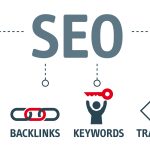Create a Digital Presence: Essential Web Design Elements
In today’s digital age, a strong online presence is more than a luxury—it’s a necessity. Your website is often the first impression your audience gets of your business, and good website design can mean the difference between someone staying on your page or clicking away to a competitor. However, crafting a compelling digital presence involves more than flashy graphics or trendy layouts. It’s about designing a site that works harmoniously to engage, inform, and convert visitors. Here are the essential web design elements that will help you create an impactful digital presence.
First Impressions: The Role of Visual Design
The saying “You never get a second chance to make a first impression” is particularly true for websites. A visitor typically decides whether to stay or leave within seconds of landing on your page. This is where visual design plays a critical role.
A clean, modern aesthetic conveys professionalism and builds trust. This means using an intentional color scheme that reflects your brand identity, consistent typography to enhance readability, and high-quality images to create visual interest. Think of your website as an extension of your business—it should align with your values and appeal to your target audience.
For example, if you’re in the eco-friendly products business, earthy tones and natural imagery can help communicate your brand’s ethos. If you’re in tech, sleek lines and a minimalist design can evoke innovation and efficiency. Effective website design starts with knowing how you want your brand to be perceived.
Responsive Design: Accessibility Across Devices
It’s no secret that people browse the web on a variety of devices, from smartphones to tablets to desktop computers. Responsive design ensures that your website looks and functions beautifully no matter the screen size. This isn’t just about aesthetics; it’s about usability. A site that doesn’t perform well on mobile devices risks alienating a significant portion of your audience.
Responsive web development ensures that images, text, and navigation automatically adjust to fit the user’s screen. This creates a seamless experience, improving user satisfaction and increasing the likelihood of conversion. It also gives you an SEO boost since search engines prioritize mobile-friendly websites.
To test your website’s responsiveness, use tools like Google’s Mobile-Friendly Test or browser developer tools that simulate different screen sizes. Ensuring your site is responsive isn’t just smart—it’s essential.
Intuitive Navigation
Imagine walking into a store and finding products scattered without any rhyme or reason. You’d likely walk out frustrated. The same applies to your website. Clear, intuitive navigation is a cornerstone of good website design.
Organize your site so visitors can easily find what they’re looking for. A structured menu system with categories, dropdowns, and breadcrumbs can guide users through your site with ease. Avoid clutter and keep options straightforward. If visitors have to dig too deeply to find information, they’re more likely to leave.
Effective navigation doesn’t just improve the user experience—it also aids in website maintenance. A well-structured site is easier to update, reorganize, and expand as your business grows.
Speed and Performance Optimization
No one likes a slow-loading website. In fact, studies show that if a page takes longer than three seconds to load, users are likely to abandon it. Page speed directly affects user experience, search engine rankings, and ultimately your bottom line.
Optimize your site’s performance by compressing images, minimizing code, and leveraging browser caching. Use tools like Google PageSpeed Insights or GTmetrix to identify bottlenecks and address them.
Web development focused on speed isn’t just a technical necessity; it’s a user-centric practice that demonstrates respect for your audience’s time and attention.
SEO-Friendly Structure
A beautiful website is meaningless if no one can find it. Search engine optimization (SEO) should be a foundational consideration in your website design and development process.
Start with a clean and logical site structure that makes it easy for search engines to crawl and index your content. Use header tags to organize your information, include meta descriptions for every page, and ensure your URLs are descriptive and user-friendly. Don’t forget to add alt text to images so search engines can understand them, and use keywords naturally throughout your site.
Remember, good website design and SEO go hand in hand. By prioritizing both, you’re increasing your chances of being discovered by the people who need your services.
Content Presentation
Content is king, but how it’s presented can make or break your website’s effectiveness. Design for readability by choosing fonts that are easy to read, using adequate spacing between lines, and ensuring there’s enough contrast between text and background colors.
Incorporate multimedia elements like videos, infographics, or image galleries to make your content more engaging. However, balance is key. Overloading your site with too many elements can overwhelm visitors and slow down your site’s performance. Use design to guide your audience’s attention to what matters most.
Call-to-Actions (CTAs)
A great website isn’t just about looking good; it’s about driving action. Whether you want visitors to sign up for a newsletter, schedule a consultation, or purchase a product, strategically placed call-to-action (CTA) buttons are essential.
Design your CTAs to stand out while remaining consistent with your overall design. Use actionable language like “Get Started” or “Learn More” and place them in prominent locations where users are likely to see them. A well-designed CTA can significantly boost your conversion rates.
Security and Trust Elements
With data breaches and cyber threats on the rise, online security is a top concern for users. Incorporating security elements into your website design not only protects your visitors but also builds trust.
Make sure your site uses HTTPS with an SSL certificate to secure data transmission. Display trust badges, customer reviews, and privacy policies to reassure visitors that their information is safe. Transparency and security are key factors in building credibility.
Analytics and Continuous Improvement
Website design isn’t a one-and-done process. To stay competitive, you need to continually monitor and improve your site. Integrate analytics tools like Google Analytics to track user behavior and website performance.
Use this data to identify areas for improvement. For example, if you notice users are leaving a specific page quickly, you may need to rework its content or design. Conduct A/B testing to experiment with different layouts, CTAs, or color schemes to see what resonates most with your audience. Regular website maintenance ensures your digital presence stays fresh and effective.
Website design, web development, and website maintenance are interconnected. Investing time and resources into these areas will not only enhance your digital presence but also strengthen your brand’s overall impact. Take the first step today: assess your current site, identify areas for improvement, and start building a website that truly works for your business by contacting us at iwebcontent.






